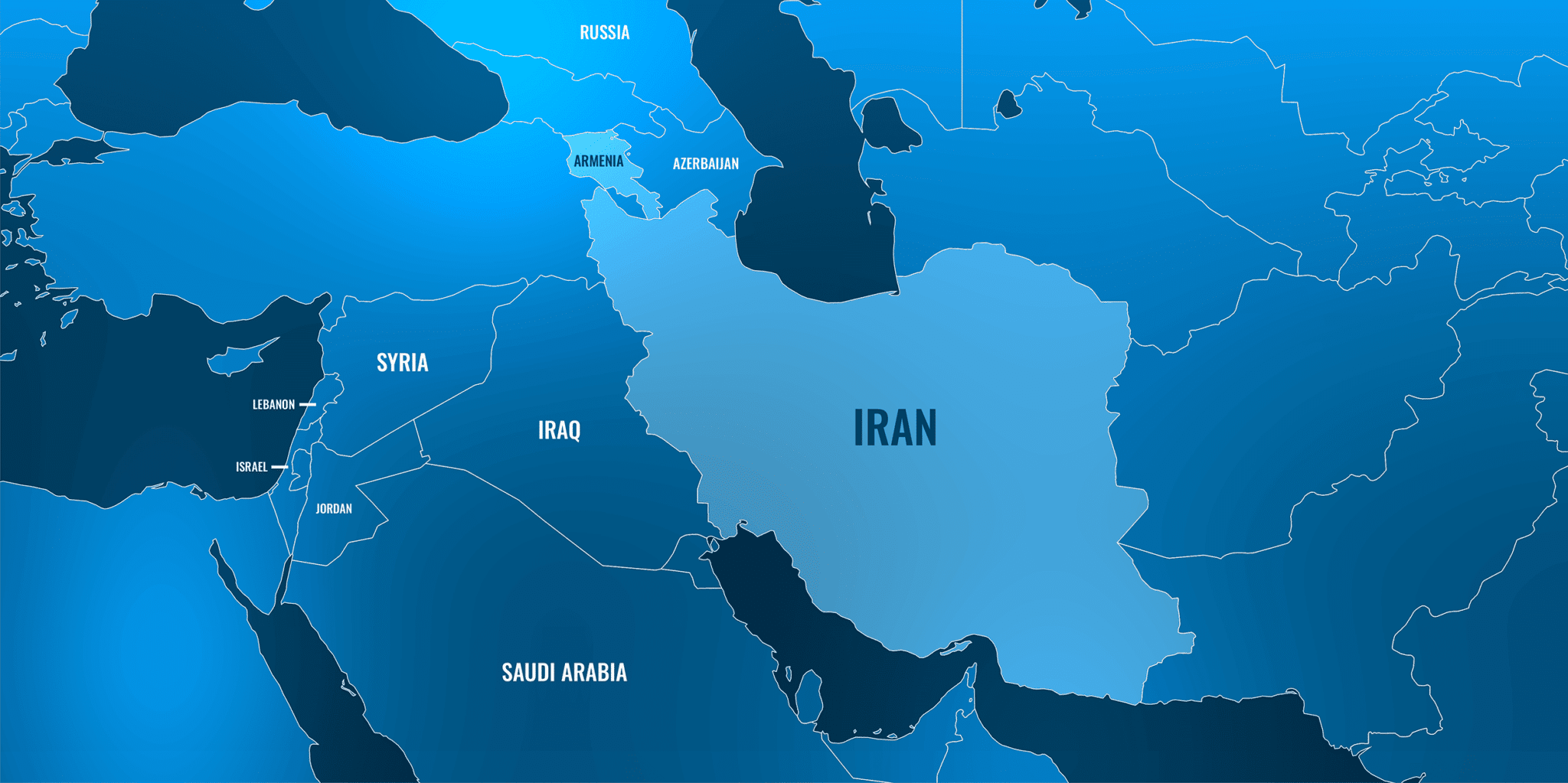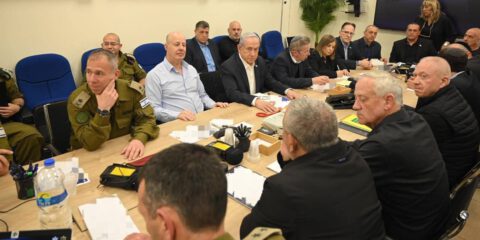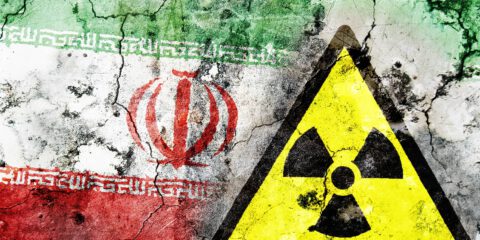Iran doesn’t supply weapons directly to its proxy groups and clients and adopts a variety of nefarious routes to maintain plausible deniability. These include manufacturing its own version of Russian model weapons, smuggling arms via third countries from former Soviet states, and providing knowledge to its proxies to locally manufacture Iranian weapons.
Before the drone attack on the Tower 22 American military base in northeastern Jordan that killed three United States servicemen, some Washington strategists still claimed that overall Iran remains contained despite its overt support for militias in the region. Yet even after the deadly attack on January 28, the administration refrained from putting the onus on Iran, instead blaming only “pro-Iranian” militias, focusing on proxies and not the real culprit, Tehran.
Responsibility for the attack was claimed by the Islamic Resistance in Iraq, a code name for an array of various militias in the country acting under Iranian command. In this case, Kataeb Hezbollah and Harkat al Nujaba are smaller compared to the Popular Mobilization Units (PMU, or Al-Hashd al-Shaabi); however, they work under the direct command of Iran’s Quds Force.
Since October 7, Iran has been actively attacking Israel and the US through its proxies. That said, Iran is not interested in any direct confrontation with Israel and the US for numerous reasons, ranging from its military weakness to the plausible denial capability provided by resorting to the use of proxies. The Tehran regime is confident in its impunity and will stay so as long as the Biden administration prefers to deal with the proxies and not their patrons.
The Axis of Resistance Doctrine
To better understand the dynamics of the Iranian proxy war against Israel and the West, one needs to explore the concept of the “Axis of Resistance” (Mahvar-e moghavamat). Many Iranian media have elucidated the concrete meaning of this concept: Thus, Iran’s strategy is not a secret and one cannot ignore its antisemitic and purely ideological dimension.
Defa Press, the media outlet of the Iranian Armed Forces, defines the Axis of Resistance as “an unwritten regional coalition of countries such as Iran, Syria, and Iraq, as well as groups such as Ansar Allah in Yemen, Hezbollah in Lebanon, and Palestinian organizations whose goal is to fight the Zionist regime and champion the Palestinian cause as the Islamic world’s primary concern,” and to end America’s hegemony in the West Asian region..
The late IRGC Quds Force commander Qasem Soleimani maintained contacts with all these groups and believed they would have a greater impact fighting the “World Arrogance” (in official Iranian parlance this is a reference to the US) and the Zionist regime. The resistance groups would become a link in a chain of resistance that would increase the strike power of the axis. Soleimani believed that the Palestinian issue is the backbone of the Umma, the Muslim supra-national community, and that it must be protected with all possible might, strengthening the unity to liberate al-Quds (Jerusalem).
The final goal of this strategy remains the destruction of the Zionist regime and expelling the United States from the region.
Iran has set in motion a panoply of allied militias conducting its policies through terrorism across the Middle East. The Iranian control of these groups is rather loose, affording them autonomy of action. For two reasons, Iran prefers not to impose on them binding schedules and not to oversee their operations: first, the looser the direct ties with Iran, the better its prospects of plausible deniability; second, if Iran’s controls were tighter, it would create more difficulties for Iran to the detriment of the country’s management resources. The whole principle of “outsourcing” for conducting Iranian policies is based on the premise that it does not depend on Iran’s human and material resources.
Besides that, one should distinguish proxies from clients. Proxies are not independent, whereas Tehran holds the key to their strategic decision-making. Thus, it will be Tehran and not Hezbollah Secretary General Hassan Nasrallah alone who makes the final decision about whether Hezbollah will opt for major escalation with Israel. In contrast, Iran did not create Hamas or the Yemeni Houthis; they are independent organizations with their own goals but receive some help and funding from Iran. Naturally, Iran never provides help for free, so these groups must prove their worthiness to Tehran to receive more weapons and funding. Proceeding from that, Iran’s most important contribution to the Hamas massacre was not in its exact planning but the massive assistance it provided to the group over the years in terms of training, weapons, and intelligence. Let alone the fact that the usage of tunnels is Hezbollah’s patent. The founder of this Iranian doctrine, Qasem Soleimani reportedly paid a secret visit to Gaza and undoubtedly advised Hamas.
Tehran’s weapons supplies to its proxies do not come directly from Iran
The supply of Iranian weapons warrants further explanations because Iran never supplies weapons directly. The logic of plausible deniability dictates that Tehran avoid direct supply of weapons.
Hezbollah, the Houthis, and Iraqi militias use Iran-made missiles and drones. It is noteworthy that all three groups are Shiite, which makes Iran trust them more than, say, Hamas. In this context, one should bear in mind that the close relationship between Iran and Hamas cannot be taken for granted. For over a decade Iran and Hamas had a tense relationship because the latter had sided with the opposition against Syrian president Bashar Assad, Iran’s key ally. It was only in October 2022 that Syria and Hamas restored ties.
Despite the trust between the Shi’ite groups and Iran, one can note that the Houthis give Iranian weapons different, non-Iranian, names. For example, the Houthis labeled the Iranian anti-ship missile Khalij-e Fars (the Persian Gulf) as “Asef” to accentuate the alleged local manufacturing of the missile.
Hamas’ procurement via third countries
Hamas uses the Iranian-made AM-50 Sayyad rifle. Since 2008, this rifle has appeared in Iraq and in other conflict zones where Iran is involved. The IDF recovered Iranian-made anti-tank mines and drones in Gaza. Iranian-made military technologies were recovered in Yemen and Somalia. The common denominator of all these weapons is that they are Iranian-made; however, they are copies of non-Iranian weapons and designed only for use by Iranian proxies and not Iranian armed forces.
However, the bulk of Hamas’ weapons are of Russian, Chinese, and even North Korean origin. South Korean intelligence confirmed the use by Hamas of a North Korean F-7 rocket-propelled grenade. Hamas also employs the Russian Kornet ATGM (anti-tank guided missile) and abundantly uses the Russian RPG-7rocket launcher. Yet neither Russia nor North Korea supplied Hamas with weapons. The weapons in question are supplied to Hamas by Iran, many times not directly from Iran but from third countries, such as Syria. Besides that, Iran’s relations with both North Korea and Russia are blooming.
Iranian methods of weapons purchase
Since the Revolution of 1979 and the eventual Iran-Iraq war, Iran has possessed many foreign-made weapons. During that period, Iran learned to purchase weapons secretly through deals and smuggling. The former Soviet Republics are a prospective hub for weapon smuggling, as evidenced by a radioactive warhead that disappeared in Transnistria in 2003. Thus, by 2017, when Iran restored relations with Hamas and started supplying the Houthis with weapons, this scheme of military non-direct procurement was already well organized.
Even with the IDF about to take control of Gaza, Iran seeks to destabilize Israel. Whereas Israel is currently focused on Gaza, the situation in the West Bank is about to erupt. Palestinian Islamic Jihad (PIJ) remains no less active than Hamas. Although it is a smaller organization compared to Hamas, it is a real Iranian proxy because it was established as such.
Iran and its allies have been intensifying efforts to smuggle weapons into the West Bank. This smuggling operation, using drones, secret airline flights, and a land bridge, uses the territory of Jordan as a transit hub to the West Bank. Syrian smugglers sneak into Jordan, delivering drugs and weapons destined for both Islamic Jihad and Hamas.
Armenia as a hub for Iranian weapons smuggling
A recent incident in Armenia sheds light on a possible source of Iranian weapons procurement. Armenia’s Minister of Internal Affairs, Vahe Ghazaryan announced in January, 2024 that his ministry had “lost” 17,000 assault rifles. He said the rifles went missing after the 2020 war against Azerbaijan. They were not lost during the war. Ghazaryan also noted that he is “concerned about the issue related to weapons and ammunition,” as it might have “potential consequences for regional security and stability.” The minister’s statement implies that unknown quantities of ammunition also went missing.
Everything in this story is abnormal; 17,000 rifles are enough to arm several infantry brigades. It is not an amount that criminals can steal from armories. Likewise, no smuggling of this huge number of weapons through the borders of Turkey and Georgia was registered. Either way, it is very difficult to conceal. Finally, it is unclear why the minister of interior announced that and why he should have mentioned concerns for regional security and stability.
The possible answer is this: the rifles in question were neither lost nor stolen. Only a country can purchase so many weapons. Naturally, the deal must have been organized through the mediation of some Armenian officials or military officers. The only country adjacent to Armenia that is interested in purchasing huge amounts of weapons is Iran.
Taking into consideration the aforementioned principles of Iranian procurement, it is easy to understand why Iran needs to purchase Russian-made rifles. The older Russian Kalashnikovs are untraceable. Iran produces its own analogs of the Kalashnikov—KLF or KLS rifles. However, they are easily identifiable by slight design differences, overall low quality, manufacture markings, and the fire selector markings on the weapons. Supplying Russian-manufactured weapons to Houthis, Hezbollah, or Hamas is preferable; nobody knows where they came from exactly, as the Russian markings may be found in various places.
The Armenian minister might be concerned that if Iranian proxies use these rifles, the origin of the weapons will come to light, harming Armenia’s reputation. Armenia has always been an important part of the Iranian-Russian axis, assisting Iran in circumventing sanctions.
Iran continues to fund and assist terrorism against civilians using sophisticated methods of smuggling through third countries. These mischievous mafia state methods are hard-wired into the official ideology of this regime. It is important to understand that, unlike organized crime groups that obtain material profits with mafia methods, the Iranian regime employs such methods to achieve ideological goals. From the beginning, the Iranian regime has used mafia and terror methods to achieve ideological goals. For that reason, Iran’s ideological motives must be taken with the utmost seriousness.
Likewise, those who assist this regime must be warned. Whereas it is widely known that Iran funds terrorism, surprisingly, there is less discussion about the sources of weapons smuggling that make this funding possible.
JISS Policy Papers are published through the generosity of the Greg Rosshandler Family.
Photo: Free Vector Maps.com









 - בניית אתרים
- בניית אתרים